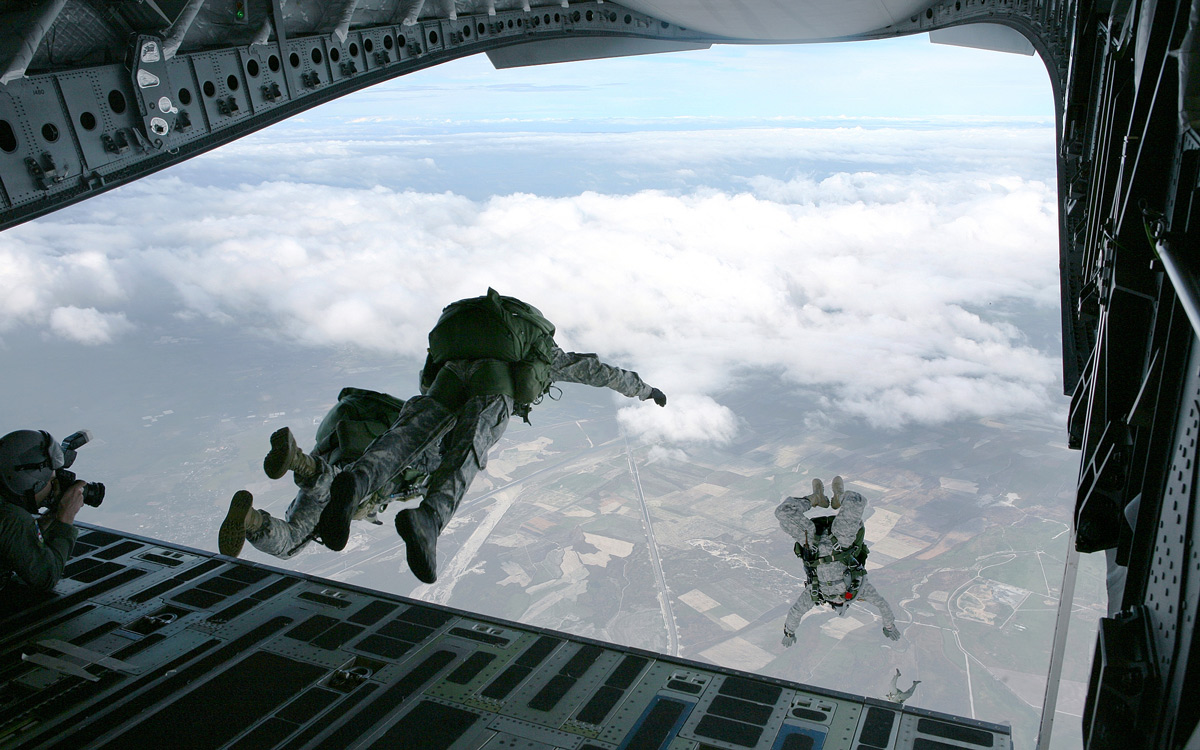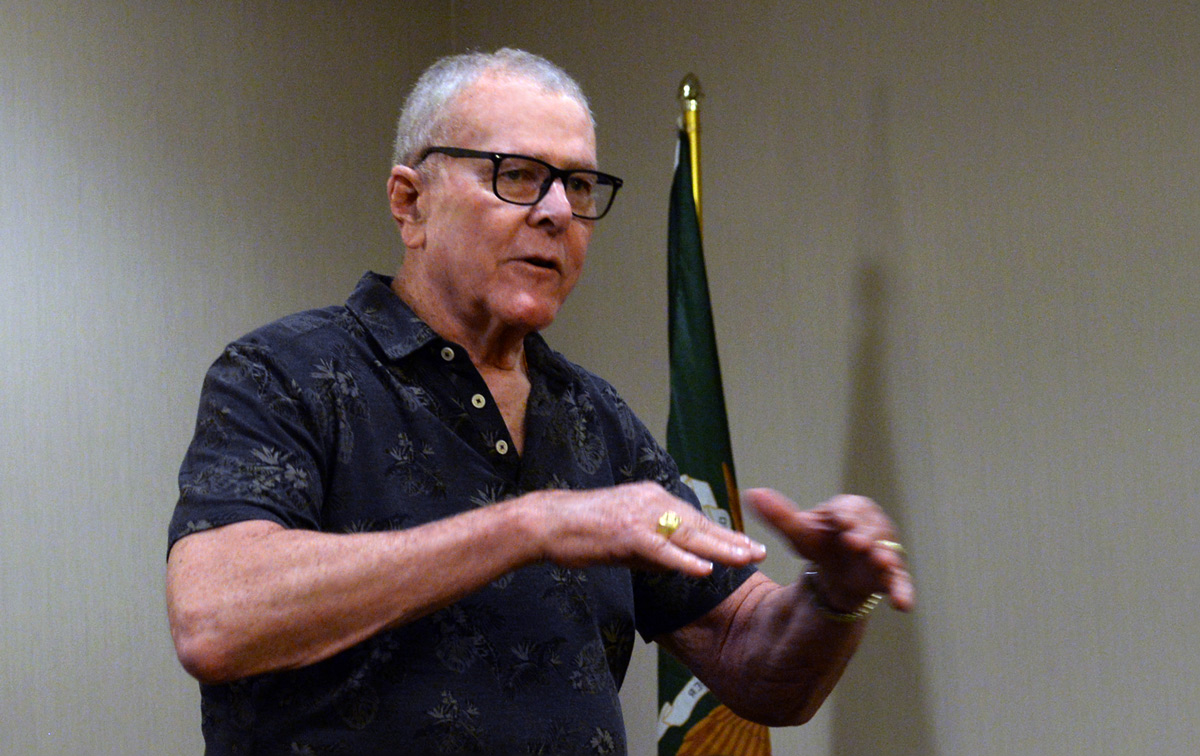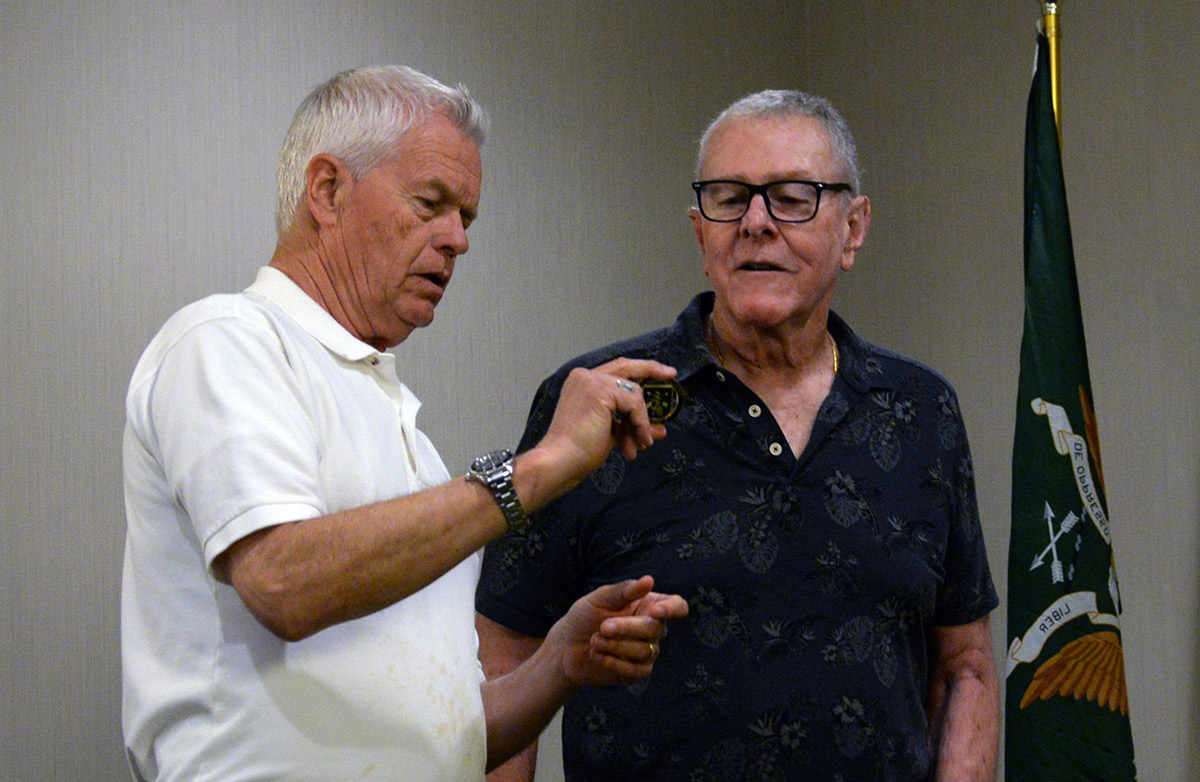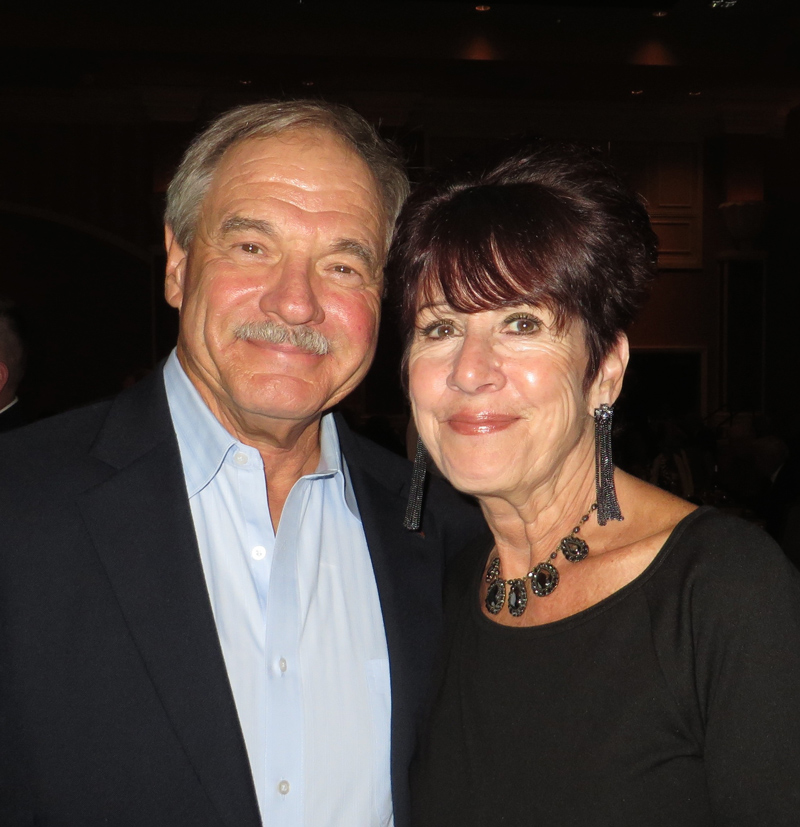Cliff Newman
and the First Combat HALO Jump:
What Could Possibly Go Wrong?

By Mike Keele
Originally published in the May 2019 Sentinel.
Chapter 78 had the distinct honor of hosting SFA Executive Director and SOG Recon Team Leader Cliff Newman and his lovely wife Karen at our April 13 meeting, held at the Embassy Suites Hotel in Anaheim, California. Cliff said his mission was top secret, but he was willing to let us in on it — they were on vacation. Having spent the previous night in War Zone L.A., their mission plans called for a breakfast stop at our meeting, then a continuing recon of sites for a new West Coast FOB.
Cliff limited his story telling to just one episode of his three-year span of tours in Southeast Asia. He told us Billy Waugh, a well-known instigator of trouble, approached him with the idea of making the first ever HALO jump into combat. The task proved more complex than just strapping on a trusty old T-10, hooking up and bailing out the back door. One complication was that the team would be jumping into Laos, at night, with indigenous troops on the team, using parachutes. Cliff said there was a small problem with that parachute thing for the indig, because there wasn’t even a word in the Montagnard language for “PARACHUTE.”
Cliff related that the train-up period started with a flight to Okinawa for the initial jump school for some of the team. One member of the group, who had an oak leaf cluster on his collar, asked where they hooked up their static lines? He was never seen again. Then, on their first jump from altitude, a Montagnard pulled the ripcord at 12,000 feet, and drifted out to sea, where he had to be picked up by a Marine Corps helicopter.

Cliff Newman describes making the first HALO jump into combat. (Photo by Rick Carter)
The Big Day Arrives
Then finally, after smoothing out the usual wrinkles of an unique, top-secret operation, they were off to CCN, where they waited, and waited, and waited for suitable weather. When the big day, er, night came, off to Laos they went. And at 17,000 feet, over enemy territory at oh-two-hundred hours, Cliff was the first one off the ramp. About five seconds later, he was also the first one to hit clouds and icy cold rain with zero visibility. Then, the sopping wet bag holding the newfangled, non-water-proof direction finder blocked his view of his altimeter.
But not to worry, there was sufficient light when he broke out of the clouds at about 2,000’ AGL, so the biggest problem he faced with the landing was the tree that caught his parachute canopy. After dispatching with that problem (we call them issues, today), he secreted the ‘chute and set out for higher ground, thinking he knew where he was. Once he had both feet solidly on terra firma, Cliff took out his new, top-secret transponder device didn’t work, because it wasn’t waterproof. There was a moment in time where Cliff felt terribly alone: he was deep inside Laos, alone, in the rain, in triple-canopy jungle, a transponder that didn’t work and none of his teammates within sight.
By chance, Cliff encountered one of the two indigenous team members later that day, and they hung out together for the next three days, while the rest of the team found its self spread over a six-mile arc, about six miles from where they thought they had been dropped. The good old Air Force lads had, as it was later learned, dropped the team over the wrong mountain range, thus, none of the maps that the team members carried were accurate. SOG SOP dictated that recon men only carry a small cutout from a map of the actual target area. So, Cliff and his team abided by the SOP but because they covered the wrong mountain range, the maps were also completely useless. But on that third day, covey flew through the area and determined what their actual dispositions were and the next day, they were extracted.
After the Mission
The mission was not a total SNAFU though, as some enemy dispositions were noted and their extraction was flawless. Upon reaching Da Nang, they were whisked away to SOG HQ in Saigon, where they were treated to a sumptuous midnight buffet. The mission was declared a success, if only because there were no casualties. Now what could you say went wrong? It was, after all, an airborne mission. After having the pleasure of Cliff sharing his story from the historic, first SF SOG combat jump, I came up with a suggested nickname for hard-working SFA Executive Director: Mr. Modesty. Like all SF speakers who have appeared before Chapter 78 over the years, they are all modest, truly quiet professionals and Cliff was the epitome of that model soldier. Some of the most interesting pieces of information about that mission emerged during the Q&A segment of the meeting.

Chapter 78 President John Stryker Meyer presents SFA Executive Director Cliff Newman with the newly designed Chapter 78 challenge coin. (photo by Rick Carter)
As part of the modesty shtick, Cliff briefly mentioned that he has personally returned to Southeast Asia with DPAA officials in an attempt to find the remains of two CCN SOG Recon Team Intruder members and a 101st Airborne four-man helicopter crew that crashed and burned in Laos in Feb. 1971. Cliff was on the original Bright Light mission following the horrific, deadly crash. The Bright Light team found the six Americans, placed them in body bags and waited for an exfil in the morning. However, because the enemy attacked the Bright Light team with a well-coordinated attack, the Bright Light team regrettably left the bodies behind during the severe fighting and subsequent exfiltration.
Since then, Cliff has returned to Laos three times in an effort to pinpoint where the Americans went missing and, in typical style, said that if called again, he’d go back one more time. And, unbeknownst to the audience, Cliff said that without mentioning that he’d recently had knee replacement surgery.
And, one final SOG note of interest, Chapter Prez John Meyer pointed out that Cliff’s beautiful wife Karen is the sister of SOG Recon soldier Dale Dehnke, who was KIA in Laos in May 1971. That reminder was another quiet fact that pointed out just how deadly the secret war during the Vietnam War was for the Green Berets on the ground and the airmen who supported them during the eight-year conflict that had the highest SF casualty rate in the war.
Editor’s Note: Sergeant First Class Clifford M. Newman was inducted to the Distinguished Members of the Special Forces Regiment on 5 April 2012.
Editor’s Note: Sergeant First Class Clifford M. Newman was inducted to the Distinguished Members of the Special Forces Regiment on 5 April 2012. Read his DMOR biography to learn more.
About the Author:
Mike Keele, who passed on April 8, 2023, became an honorary member of Chapter 78 in 2010. He was also a member of the Special Operations Association, and a life member of the 1st Cavalry Division Association.
He was assigned to the 1st Cavalry Division, beginning as a door gunner in Vietnam. In late 1967 thru the summer of 1968 he served as Crew Chief with a very active air section of the 1st Cav missions flying across the fence and over the A Shau Valley into Laos supporting SOG recon teams and missions supporting conventional units in the A Shau Valley — the most dangerous area of operations in I Corps in northern South Vietnam.

Mike Keele and his wife Cora.
Leave A Comment